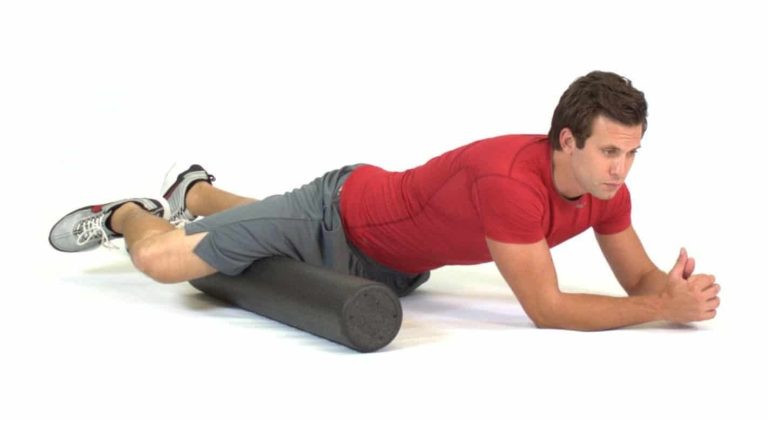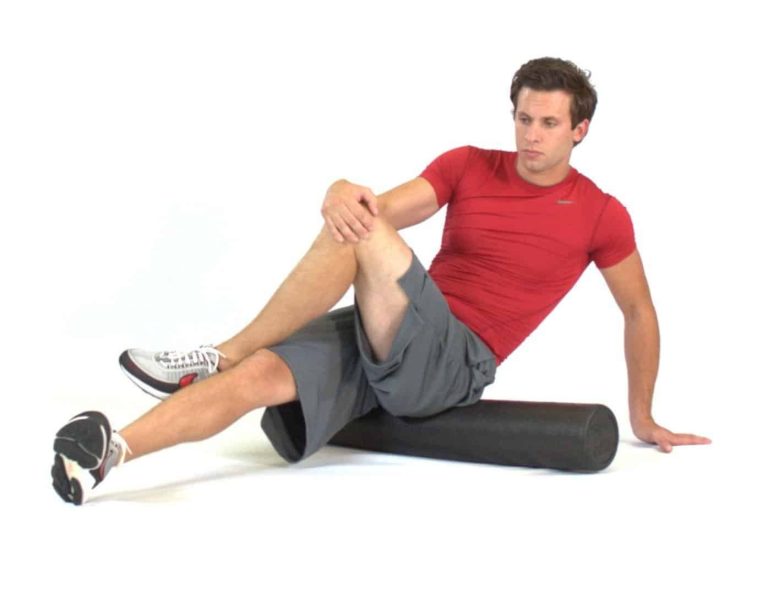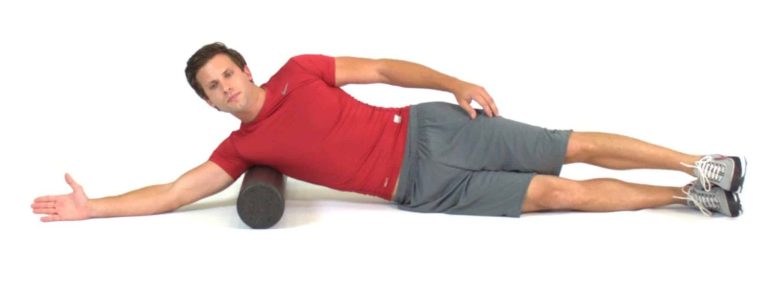BATTLE READY GYM BLOG!
LINKING FAITH TO FITNESS & ANSWERS TO YOUR GYM RELATED QUESTIONS
Sept. 5th, 2024
FOAM ROLLING / SMR...WHAT IS IT?

by: Rob Hamilton
What is Self-myofascial Release (SMR):
Self-myofascial Release (SMR) is a form tool assisted, self-massage that is used to release muscle tension, improve flexibility and boost movement efficiency. SMR can be done with a variety of tools such as foam rollers, lacrosse or tennis balls, hand held rollers, or even a rolling pin. Fitness professionals and physical therapists often include SMR into recovery plans and exercise routines because of their many applications and benefits.
Foam rollers and other tools work well when the body part or muscle is directly on top of the tool and moved back and forth rhythmically. Myofascial release can be an intense experience because pressure is applied to tight and knotted muscles in order to trigger relaxation. However, consistent use will maximize the benefits and decrease the discomfort.
How does it work?
Bear with me, I’m going to nerd out on this one.
SMR focuses on the neural and fascial systems in the body that can be negatively influenced by poor posture, repetitive motions, or dysfunctional movements. These mechanically stressful actions are recognized as an injury by the body, initiating a repair process called the Cumulative Injury Cycle (see diagram below). This cycle follows a path of inflammation, muscle spasm, and the development of soft tissue adhesions that can lead to altered neuromuscular control and muscle imbalance.
The adhesions reduce the elasticity of the soft tissues and can eventually cause a permanent change in the soft tissue structure, referred to as Davis’s Law. SMR focuses on alleviating these adhesions (also known as “trigger points” or “knots”) to restore optimal muscle motion and function.
SMR is based on the principle of autogenic inhibition. Skeletal muscle tissue contains muscle spindles and Golgi tendon organs (GTO), two neural receptors. Muscle spindles are sensory receptors running parallel to muscle fibers, sensitive to a change and rate of muscle lengthening. When stimulated, they will cause a myotatic stretch reflex that causes the muscle to contract.
The GTO receptors, located in the musculotendinous junctions, are stimulated by a change and rate of tension, and when they are stimulated will cause the muscle to relax. When a change in tension is sustained at an adequate intensity and duration, muscle spindle activity is inhibited causing a decrease in trigger point activity, accompanied by a reduction of pain.
In simpler terms, when the pressure of the body against the foam roller is sustained on the trigger point, the GTO will “turn off” the muscle spindle activity allowing the muscle fibers to stretch, unknot, and realign.
What are the Benefits of Myofascial Release?
SMR benefits include:
- Correction of muscle imbalances
- Muscle relaxation
- Improved joint range of motion
- Improved neuromuscular efficiency
- Reduced soreness and improved tissue recovery
- Suppression/reduction of trigger point sensitivity and pain
- Decreased neuromuscular hypertonicity
- Provide optimal length-tension relationships
- Decrease the overall effects of stress on the human movement system
What types of tools can I use for SMR?
The most common type of tool we will cover is a foam roller. You can also use massage guns, tennis balls, lacrosse balls, SMR blades, spiked balls, or even a rolling pin. Trained professionals can also use their hands, elbows, etc to assist clients with myofascial release. This can be in the form of massage or Active Release Therapy (PRO-TIP: Rob offers this service)
Should I use SMR before or after my workouts?
The short answer is BOTH! Foam rolling should be done before static or dynamic stretching activities, improving the tissue’s ability to lengthen during stretching activities. Foam rolling can also be done as part of the cool-down to aid in muscle recovery. Foam rolling activities should be performed on tissues identified as overactive during an assessment process with your trainer, or, on muscles you can feel are tight


How to foam roll:
We will cover other tools during the in person seminar. Since a foam roller is the most commonly used and easily accessible option, I have included a few of my favorite techniques below:
Calves:
Place foam roller under the mid-calf. Cross the opposite leg over the top of the other to increase pressure. Slowly roll calf area to find the most tender spot. Hold that spot for 30-90 seconds until the discomfort is reduced. Especially beneficial for runners or those who regularly wear shoes with elevated heels (8). Switch legs and repeat.


Adductors:
Lie face down and place one thigh, flexed and abducted, over the foam roller. Slowly roll the upper, inner thigh area to find the most tender spot. Hold for 30-90 seconds until the discomfort is reduced. Switch legs and repeat.

Tensor Fascia Latae (TFL)
Lie on one side with the foam roller just in front of the hip. Cross the top leg over the lower leg, placing that foot on the floor. Slowly roll from the hip joint down toward the knee to find the tender spot. Hold for 30-90 seconds until the discomfort is reduced. Switch sides and repeat.

Piriformis
Sit on top of the foam roller, positioned on the back of the hip, crossing one foot over the opposite knee. Lean into the hip of the crossed leg. Slowly roll on the posterior hip area to find the tender spot. Hold for 30-90 seconds until the discomfort is reduced. Repeat on the other side.

Latissimus Dorsi
Lie on one side with the arm closest to the ground outstretched with thumb facing upwards. Place the foam roller under the arm in the axillary region. Slowly roll back and forth to find the tender spot. Hold for 30-90 seconds until the discomfort is reduced. Repeat on the other side.

Thoracic Spine
Lie on the floor with the foam roller behind the upper back. Cross arms to opposite shoulders. Raise hips off the floor and slowly roll back and forth to find the tender spot. Hold for 30-90 seconds.MAKE SURE YOU DO NOT ROLL THE LOWER SPINE!

Plantar Fascia
Take your shoes off, and place a tennis ball on the ground. Place the sole of one foot on the tennis ball with the other foot on the ground. Stand next to a wall, if needed, for balance. Put the majority of your weight on the foot with the ball underneath, and roll the ball back and forth along your plantar fascia. Roll for 30–60 seconds, and then switch feet.
Other Applications:
You can also do various stretches while on a foam roller, ball, etc. to amplify the benefits of those stretches. Some common stretches we will cover in the seminar include:
Upper Body: lay on a foam roller (same directions as your spine, from hips to head)
- Air Angels
- Swimmers
- Prayer Hands
- Penguins
Lower Body: lay on a foam roller going across your hips (side to side) for these movements, the opposite leg stays straight and on the ground, both shoulders stay on the ground. You can use a rope, band, towel, belt, etc to help pull the leg you are stretching.
- Bring one knee to chest
- Bring one leg straight up
- Pull leg over other leg. Try to keep your leg straight and get it as close to the floor as you can.
- Pull leg out to same side (opposite of above)
- Flutter kicks (both legs straight, alternating up/down SLOWLY)
IF YOU HAVE QUESTIONS OR WANT TO SET UP A ONE-ON-ONE SMR SESSION, EMAIL ROB@THEGMISHERE.COM!
© Copyright 2024 THE GYM. All rights reserved.
The Gym | Defuniak Springs
448 E. NELSON AVE, DEFUNIAK SPRINGS, FL. 32433
We need your consent to load the translations
We use a third-party service to translate the website content that may collect data about your activity. Please review the details in the privacy policy and accept the service to view the translations.